
One village leans on snakes, others are linked to masterminds, broken food, or the creation of deities. Hanoi is unique in that, despite being a massive and ever-modernizing city, it still has dozens of traditional villages with their trademark.
These communities include Hanoi’s neighborhood of bold serpent snarers, the village that makes its famine snack, the hamlet of gifted woodworkers who craft religious idols, and the area that’s been producing geniuses for 1,000 years.
Le Mat

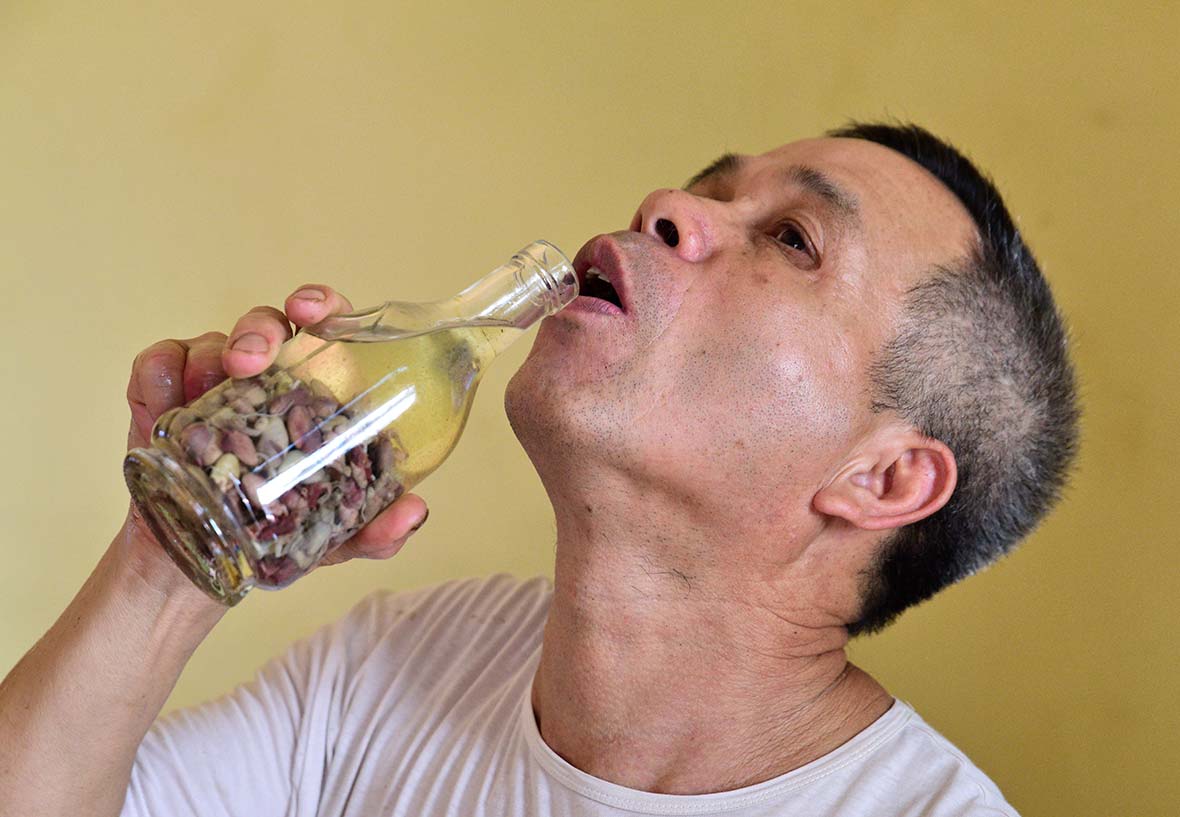



The more fearful I became the harder Ba Mao laughed. What amused this middle-aged Vietnamese man was that he was the one holding a giant snake, yet I was the one in panic. My palms were slick with sweat the moment he let the cobra out of its cage in the backyard of his home in Le Mat.
By the time he had this aggressive serpent in his grip and was trying to bite his face, my heart was beating like a techno track. Le Mat, about a 30-minute drive east of downtown Hanoi, has long been known for brave men like Ba Mao. It is the city’s hub of snake catchers.
When Hanoi residents find a dangerous snake inside their home or business, they call upon Ba Mao or one of his colleagues from Le Mat. He is the seventh generation of men in his family to take on this hazardous occupation. The people of Le Mat are patently proud of its unique reptilian history.
The community is laden with snake signage, murals, and photos. All of this also helps brand Le Mat, which in recent years has become an emerging, quirky tourist attraction. Visitors can attend snake shows, eat at snake restaurants, or enter the homes of snake catchers like Ba Mao to see how he wrangles these nightmarish creatures.
Ba Mao even offered me some snake blood. I declined to drink it or to eat a snake’s heart. I excused myself saying my stomach was full from breakfast. Le Mat and its snake men are memorable, that’s for sure.
Vong
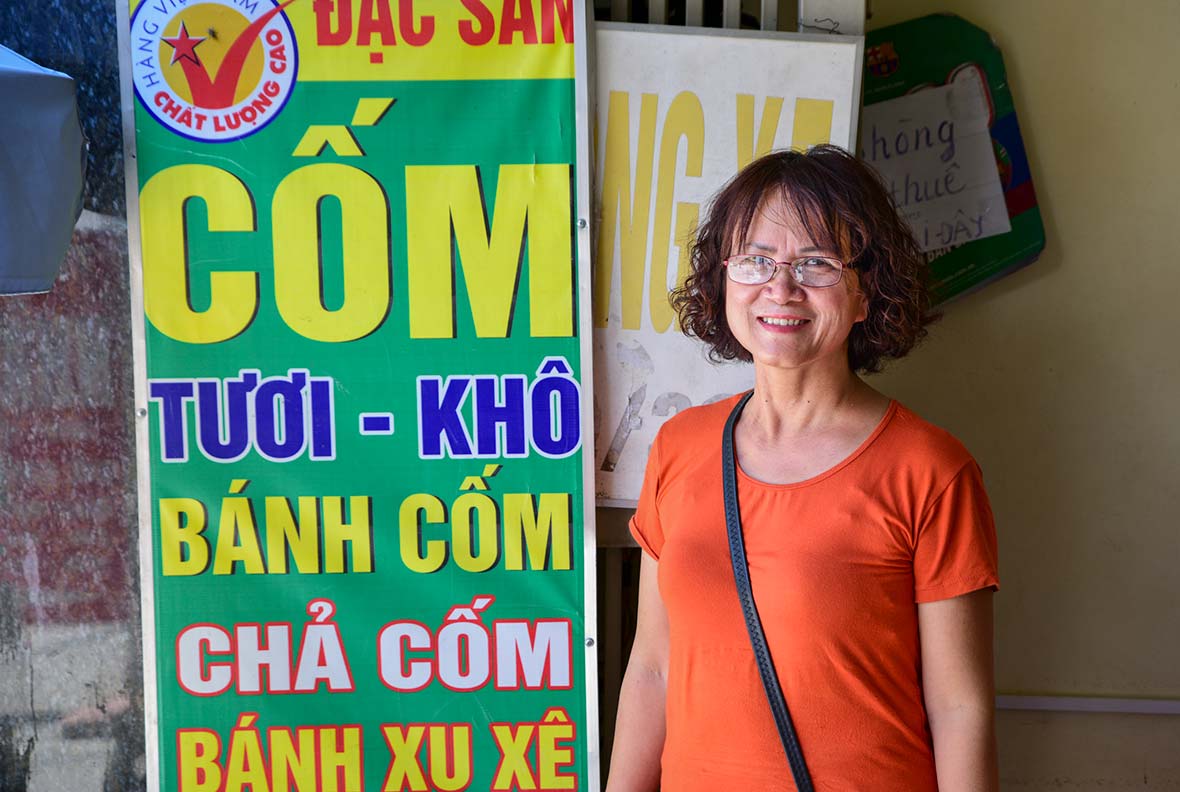




It is the tastiest of silver linings. One of Hanoi’s favorite snacks, com (broken rice), was the unexpected product of a catastrophe. This sticky green rice, which pairs perfectly with a pork chop or grilled shrimp, can be traced back to a tragedy in the village of Vong, in Hanoi’s western suburbs.
According to local legend, Vong in ancient times had a very weak rice harvest which resulted in a famine. As its residents began to starve, a Vong man launched a culinary experiment. He roasted a pile of immature rice grains. Then he pounded and pounded them until the grains shed their husks and became soft and chewy. This broken rice proved not just edible, but delicious.
All these years later, com remains a specialty of Vong, where grains can be seen being crushed in every one of its many curling alleys. Especially between September and November, Northern Vietnam’s key rice harvesting period. Locals believe the city’s tastiest com belongs to Vong, and I’m sure they’re not wrong.
Dong Ngac
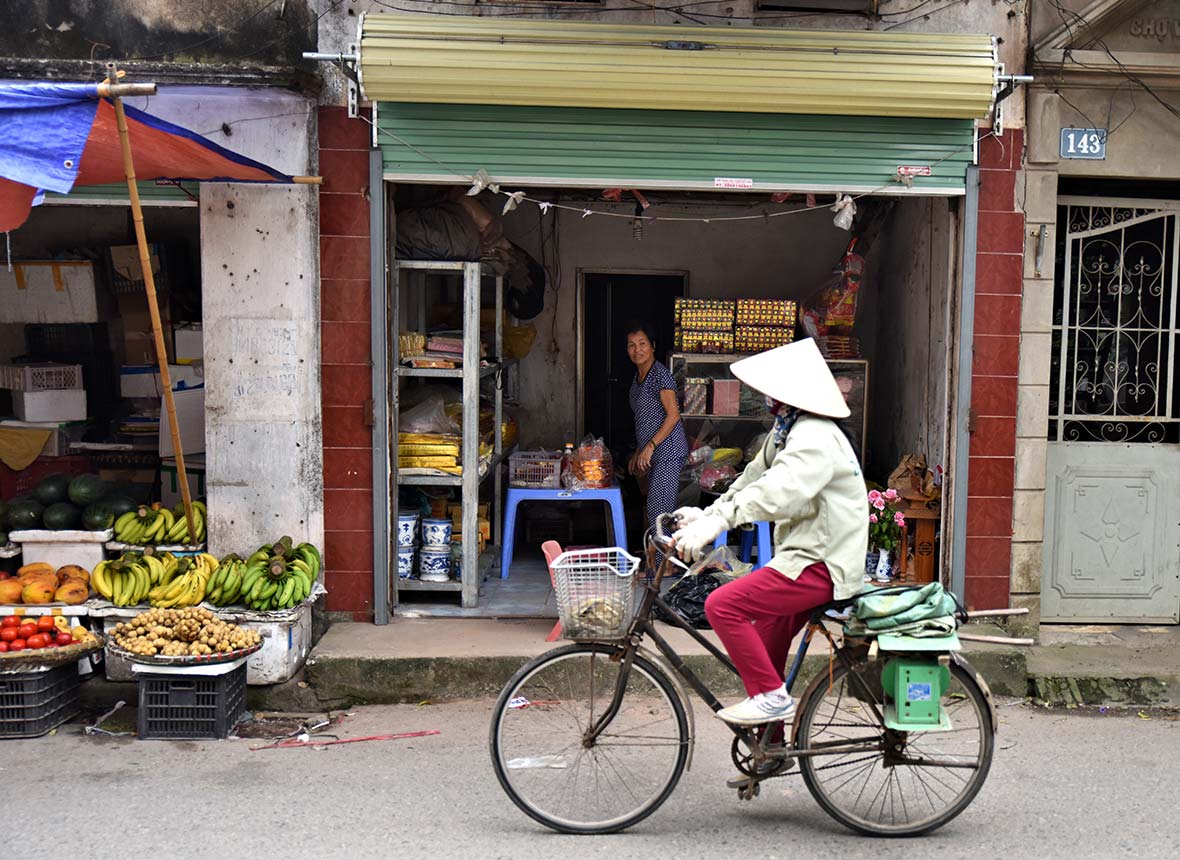

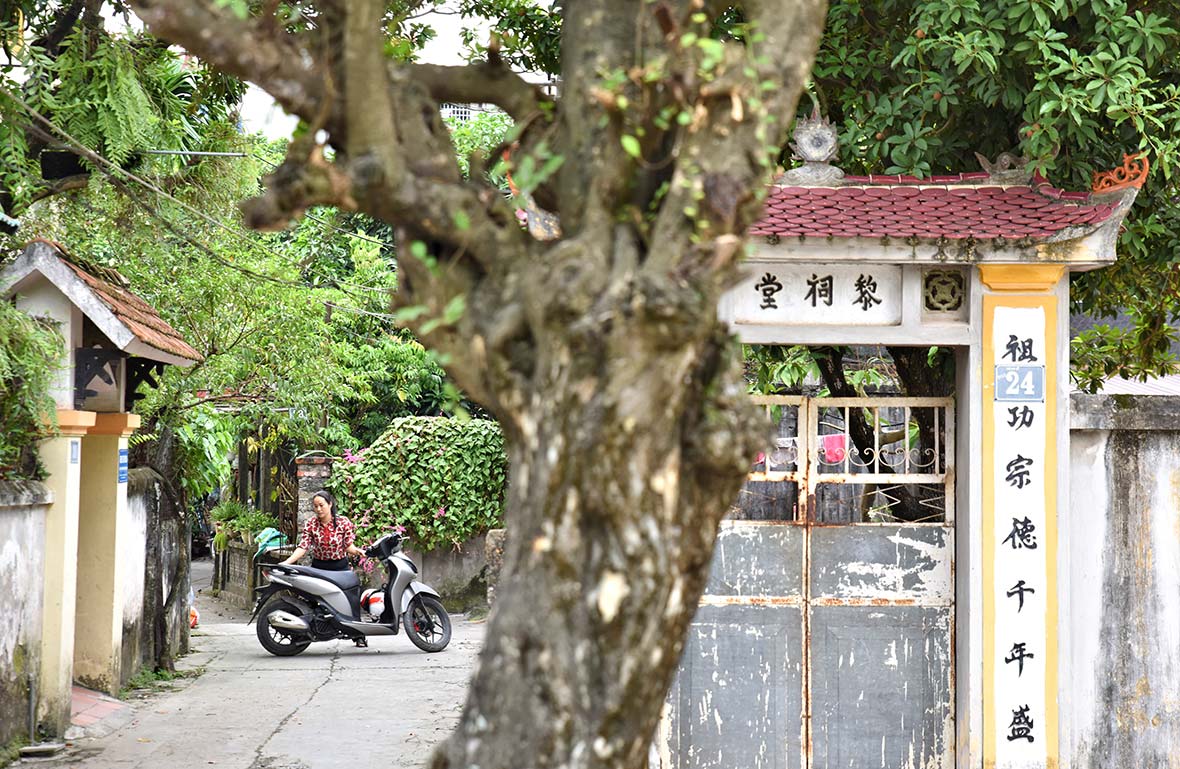



The village of scholars, at first, sounds like an overly grandiose moniker. Then you learn that Dong Ngac, this neighborhood in northern Hanoi, has produced a steady torrent of very intelligent and influential people for millennia.
Dong Ngac has less than 2,000 residents yet, in the world of academia, it has long punched many classes above its weight. It is particularly renowned for producing writers and literary scholars. Across the centuries, more than 20 of its residents have earned Ph. D.s in literature, several of whom even won Royal awards for their studies.
This history of high achievement helps to explain some of the distinctive elements of this town’s architecture. One of the most authentic old neighborhoods in Hanoi, Dong Ngac has weathered, decorative gates at its fringes, each decorated by stone carvings of books.
The community is centered around the large 17th-century Buddhist Temple Tu Khanh. Within its pretty grounds is a cluster of bells and stone towers built in honor of the town’s most significant academics. Due to its compact size, quiet streets and traditional appearance, Dong Ngac is perfect for exploring on foot.
Son Dong
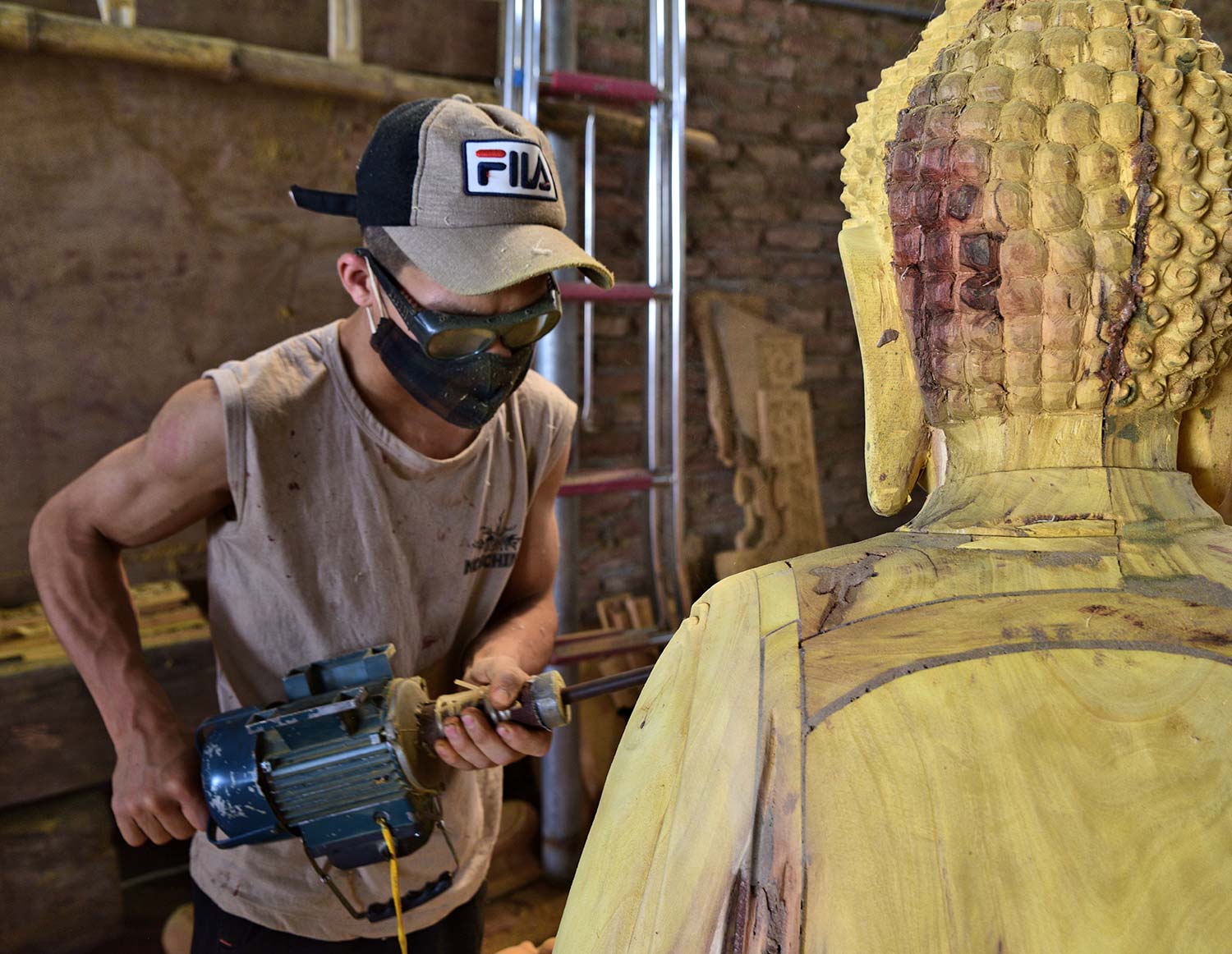





Each day, for thousands of years, Son Dong has given birth to gods. I know, because I witnessed a deity created from scratch. Located about 45 minutes drive west of Hanoi’s tourist district, Son Dong village is an ancient community built on the handcrafting of Buddhist deities.
There are several hundred such artisans in Son Dong. Tourists can have bespoke religious idols created for them at one of the town’s many woodworking studios. Or, as I found, these workshops are also receptive to visitors who want to see the delicate craftsmanship of carving a six-foot-tall Buddha.
They are fiercely proud of their products, especially in an era when so many of the country’s Buddhist idols are mass-produced in factories. Watching them slowly and skillfully shape a giant lump of jackfruit wood is a fascinating and soothing experience.
